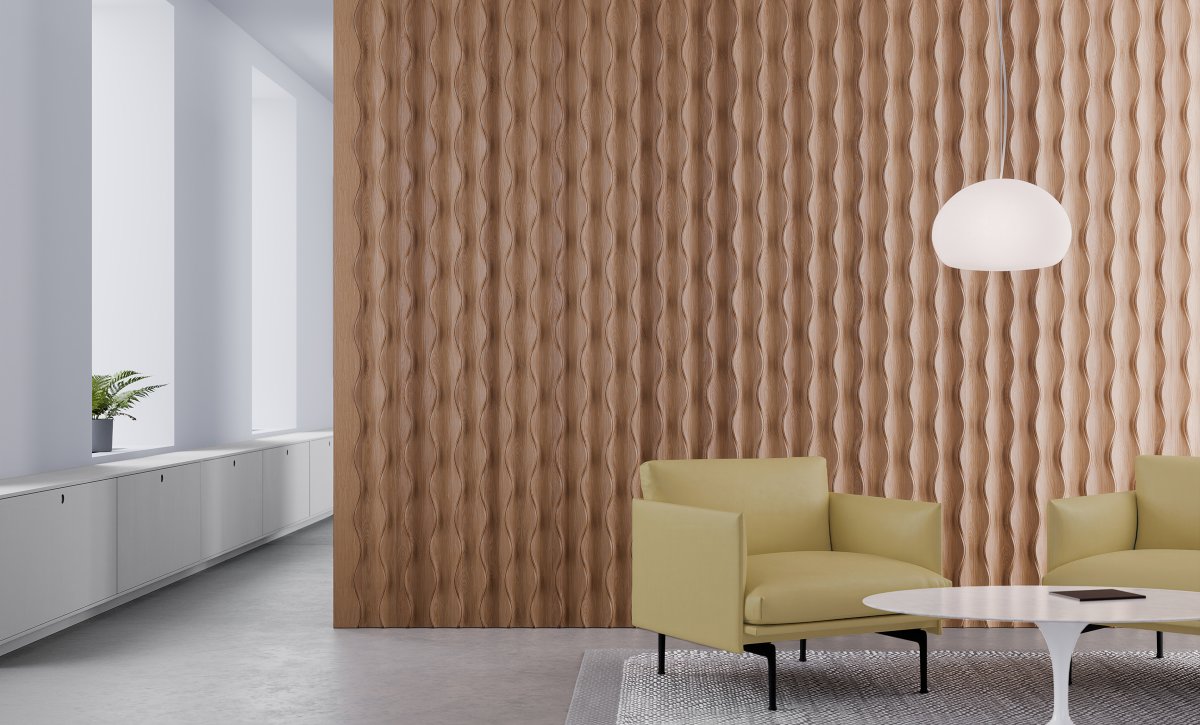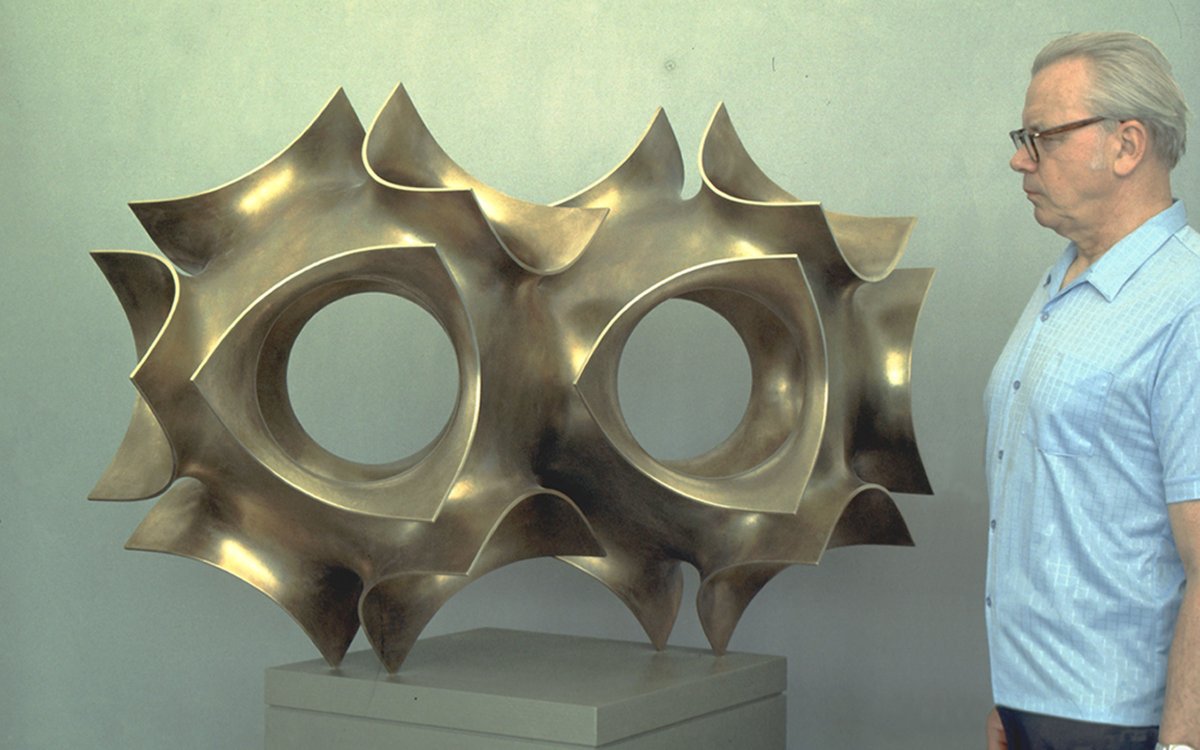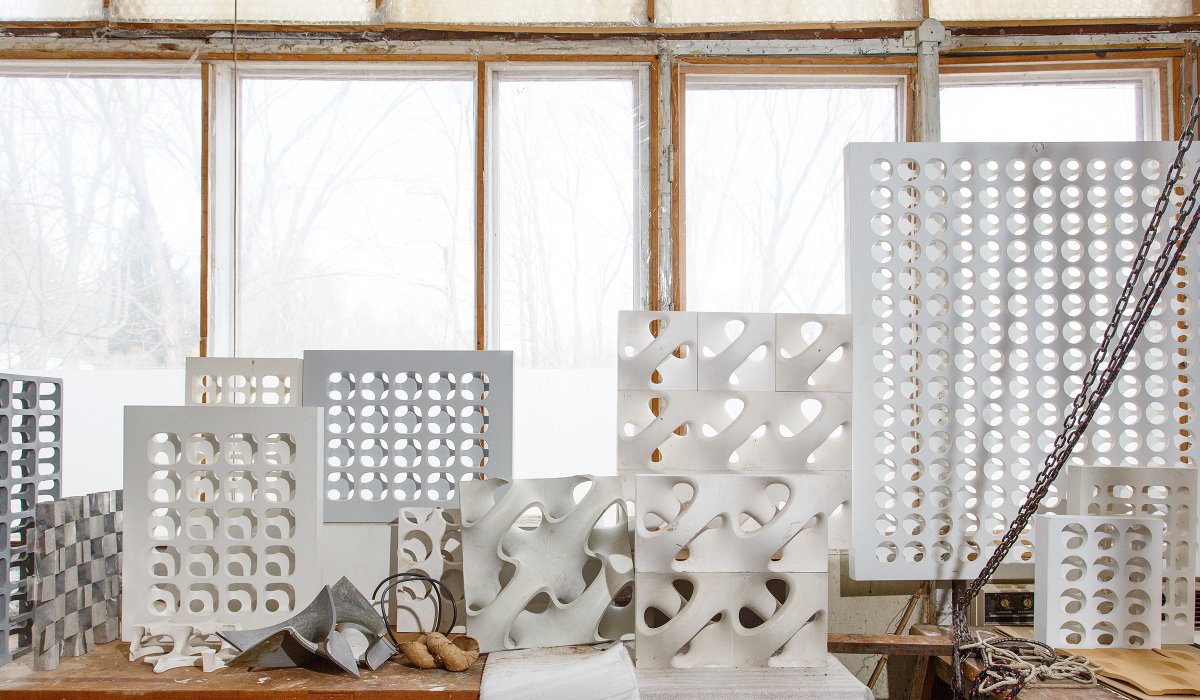A Mid-Century Marvel Makes a Contemporary Comeback
July 26, 2024
July 26, 2024

For decades, Erwin Hauer devoted his career to perfecting sculptures and architectural screens that celebrate the infinite, continuous surface—or Modular Constructivism. His light-diffusing walls and room dividers are considered "quintessential works of modernism," and his impact on architecture and the design world at large continues today.
In 2020, Spinneybeck | FilzFelt worked with Erwin Hauer Studios to reimagine his iconic designs through a series of inspired hanging panels. With an ongoing effort to revitalize his work, Spinneybeck continues to celebrate the late designer’s work with a new take on a familiar favorite – Design 406.
Always with an effort to bring natural materials to the forefront, Design 406 is now available in five wood species, with the option to add color with paint or any Spinneybeck upholstery leather. This clever modular system is comprised of individual planks that come together to form an uninterrupted composition that celebrates the continuous curves of Erwin Hauer.

Erwin Hauer spent his life perfecting architectural screens and sculptures that celebrate Modular Constructivism. In 1950, this Austria-born sculptor began exploring modular sculptures that took shape as light-diffusing screens and walls that first appeared in churches in Vienna. These screens garnered attention abroad and eventually brought Erwin Hauer to the United States, where, after decades of success, he remained dedicated to his work as an independent sculptor in Bethany, Connecticut. During this time, he delved into various designs and prototypes, focusing exclusively on saddle surfaces, a field of studies to which Hauer made significant contributions.

“One thing that I thought is extremely important in sculpture is the concept of space and time. There is an element of time in anything three-dimensional. Something has to change in significant ways when you change your vantage point in space. It’s the difference between noise and music. You want something that transcends the merely visible.”

Former Director of Design at Knoll and Industrial Designer Carl Gustav Magnusson has spent the past year delving into the work and archives of the late designer, exploring Erwin’s sculptures and prototypes through the lens of modern technology. Sifting through decades of sketches, concepts, and unfinished works, Carl reflects on Erwin’s impact on the architectural and design worlds, the surprising finds from the designer’s archives, and the legacy of this mid-century visionary.

“Erwin was driven by his fascination with geometric forms based on Euclidean principles. He explored the visual complexity of mathematical shapes into three-dimensional shapes. I think this proves how enduring the aesthetic of his work is. Because his work is rooted in basic mathematics and geometry, it will always be timeless, always be in style, and
always be beautiful.”
